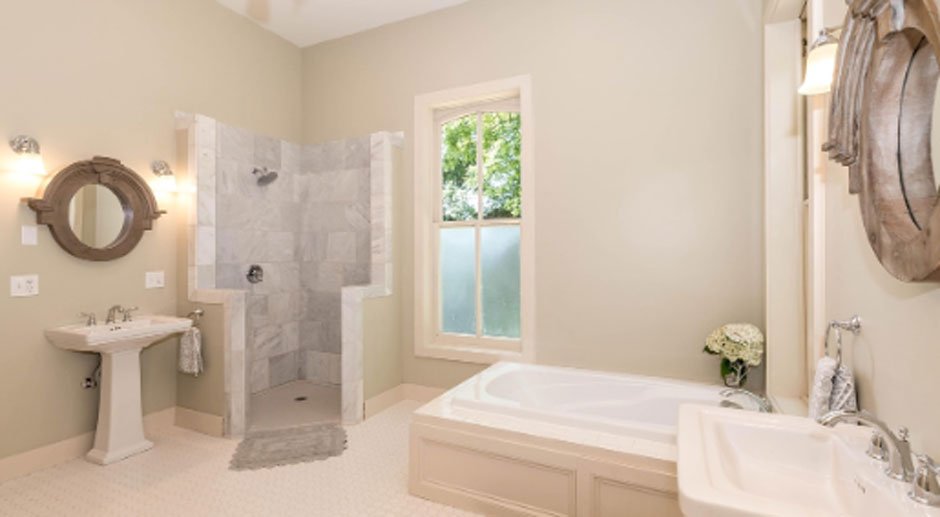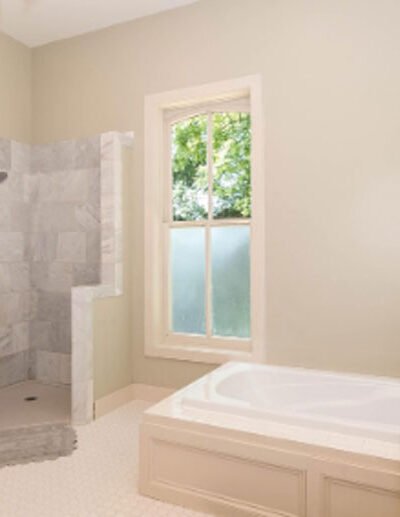 Photo courtesy of Pixabay
Photo courtesy of Pixabay
Even when you draw inspiration from Pinterest, the dizzying array of options out there can make choosing bathroom fixtures and finishes challenging. It is one of those projects that requires attention to every little detail. Fortunately, you can cut through the noise with a bit of guidance. This article looks at the principles that design-build professionals employ to create bathrooms that are both beautiful and functional, as well as durable and deeply personal. Here’s how to make smart, stylish, and lasting choices:
1.Consider Calling in the Experts
While you may have mapped out a solid plan on what to add, remodel, or change, choosing fixtures and finishes can still feel like a full-time job. Perfectly aligning the undertones, texture, and scale of your preferences may require the help of professionals.
An individual piece may look beautiful alone, but it can clash with others when installed. The value of a professional bathroom remodeler comes into play here, ensuring every choice works technically and stylistically within your space.
2.Start with Function First
If you do decide to take the reins yourself, you should take a step back and really think about how you use your bathroom. Having a clear vision of function is where all great designs begin, and not necessarily in Pinterest boards. Ask yourself:
- Do you prefer long showers or relaxing baths?
- Is the space shared or private?
- Do you need low-maintenance fixtures, or do you not mind a bit of upkeep?
Define your lifestyle narrative. Would you prefer a deep soaking tub and serene colors? Your daily reality should be the primary driver of your choice. For instance, a rain showerhead looks luxurious, but if you have low water pressure, you might be disappointed.
Similarly, freestanding tubs make a stunning statement but may not suit smaller bathrooms. Professionals often plan a remodel by first mapping how fixtures will perform for the specific household. Adopting that mindset will ensure your design choices look stunning and also work seamlessly.
3.Understand How Each Fixture Works
Your bathroom fixtures, including faucets, showerheads, lighting, and even hardware, should hold up under constant use. Quality and thoughtful selection are important here.
- For your faucets and showerheads, go for solid brass or stainless steel. They have long-lasting performance. Cheaper alloys can corrode or leak over time.
- Your toilets and sinks should be water-efficient. WaterSense-certified products save water without compromising performance.
- As for lighting fixtures, use layered lighting. A blend of task, ambient, and accent lighting in different corners embraces functionality and style. Vanity lights provide clarity, while ceiling lighting gives even illumination.
4.Finish with Texture, Tone, and Mood
Finishes are the surfaces that define your bathroom’s character. They detect mood, texture, and even the feeling of cleanliness and comfort. Here are a few options and how they work:
- Chrome finishes are bright, timeless, and also budget-friendly. They are equally easy to clean but do tend to show water spots.
- Brushed Nickel is admired for its warm and fingerprint-resistant features. This makes it ideal for busy bathrooms.
- Matte Black works well for a modern look. If you are going for a contemporary and industrial-style bathroom, this should be the obvious choice.
- Oil-rubbed bronze is rich, rustic, and traditional. You can pair it with natural textures.
5.Combine Finishes
Mixing metals and textures can elevate your bathroom when done well. You have to balance it for a clear visual rhythm. You can do as the professionals do by:
- Sticking to one dominant finish and an accent or two.
- Using contrast strategically. For example, matte black lighting against brushed nickel faucets creates depth and interest.
- Keeping the undertone consistent for harmony. Warm should always go with warm and cool with cool.
6.Choose Materials that Last
Trends come and go, but durability never goes out of style. The bathroom is one of the most moisture-heavy spaces in your home, so your choice of materials should be able to stand the heat, humidity, and constant cleaning.
When it comes to countertops, quartz is the champion of durability. It’s non-porous, resistant to stains and scratches, and requires zero sealing. Porcelain slabs are known for their strength, stain resistance, and require less maintenance than marble or concrete, which shares the same look with it.
For tiles, porcelain and ceramic are practical and versatile. However, natural stones like marble and granite require more upkeep. Moisture-resistant MDF or solid wood lasts longer than particle board for your cabinetry.
Endnote
A cohesive bathroom design should not be a matching game for every finish. It needs to feel like an agreement between surfaces. The tiles should complement the vanity, the lighting should flatter the mirror, while the hardware echoes the faucet tones. You can also use repetition to your advantage, as these subtle cues create unity and visual flow. Invest in materials and designs that will serve you every day with comfort. When done right, your bathroom will feel effortlessly cohesive and timelessly elegant.





Leave a Reply